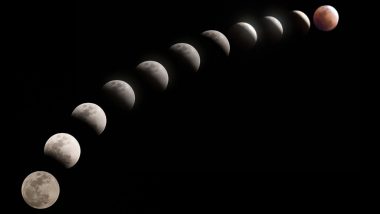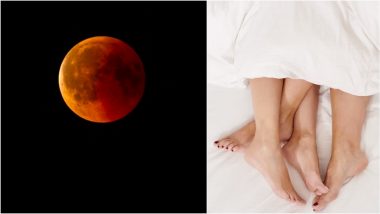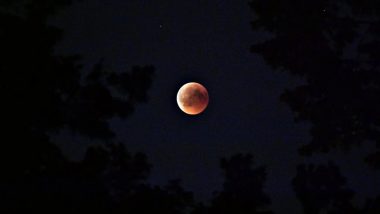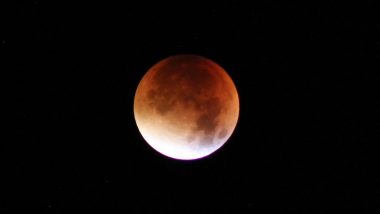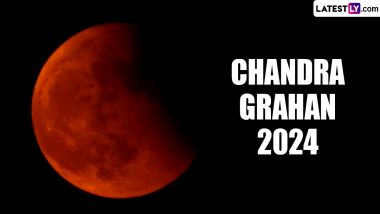The night of July 27 is going to see a wonderful celestial spectacle in the sky as it will be the century's longest lunar eclipse. The total lunar eclipse will last for 1 hour 43 minutes and see the moon changing its colour to a shade of red, thus called as the Blood Moon. The lunar eclipse or Chandra Grahan will be visible to everyone in India but the visibility depends on the weather across the country. Since it is the monsoon season, if there are too many clouds then you might not get to witness the entire celestial event in much clarity. Lunar Eclipse 2018 in India: July 27 Chandra Grahan Sutak Time, Significance & Myths Around Blood Moon.
Time of the Lunar Eclipse in India:
The total lunar eclipse will fall on the night of July 27 and continue into July 28 after midnight. An entire eclipse takes place in phases, as the amount of shadow on the Moon changes. The first phase of the lunar eclipse, which is when the Moon falls under the Earth's shadow will begin at 11.44 pm IST. So the eclipse will begin from 11.44 pm and the very initial phase will start 10 minutes later at 11.54 pm. This is called the first partial eclipse.
The total lunar eclipse wherein the Moon is completely covered by the Earth's shadow, which is the most awaited phase of the event, will take place post midnight. The total lunar eclipse will be seen at 1 am IST on July 28. The Moon will reach the height of eclipse at 1.51 am IST.
After the total eclipse phase, the second partial eclipse phase will begin wherein the Moon will continue in its orbit. The second partial eclipse will be visible from 2.43 am IST. The total eclipse event including the partial and total phases will go on for about 6 hours.
Places to see Lunar Eclipse:
The entire Indian sub-continent will be able to witness the stunning Blood Moon Lunar Eclipse. Delhi, Pune, Bengaluru, Mumbai and other cities can enjoy this celestial event at the timings mentioned above.
Globally, the Eastern Hemisphere – Europe, Africa, Asia, Australia and New Zealand can experience this spectacle just after sunset on July 27. Countries of North America, most of the Arctic and much of the Pacific Ocean will not get to see the lunar eclipse. So everyone across the globe except North American continent can view the eclipse and continents of Australia, New Zealand, Africa and Asia can enjoy the best view.
So are you keen on witnessing our satellite turn red and also hide in the planet's shadow for a while?
(The above story first appeared on LatestLY on Jul 26, 2018 06:05 PM IST. For more news and updates on politics, world, sports, entertainment and lifestyle, log on to our website latestly.com).













 Quickly
Quickly








